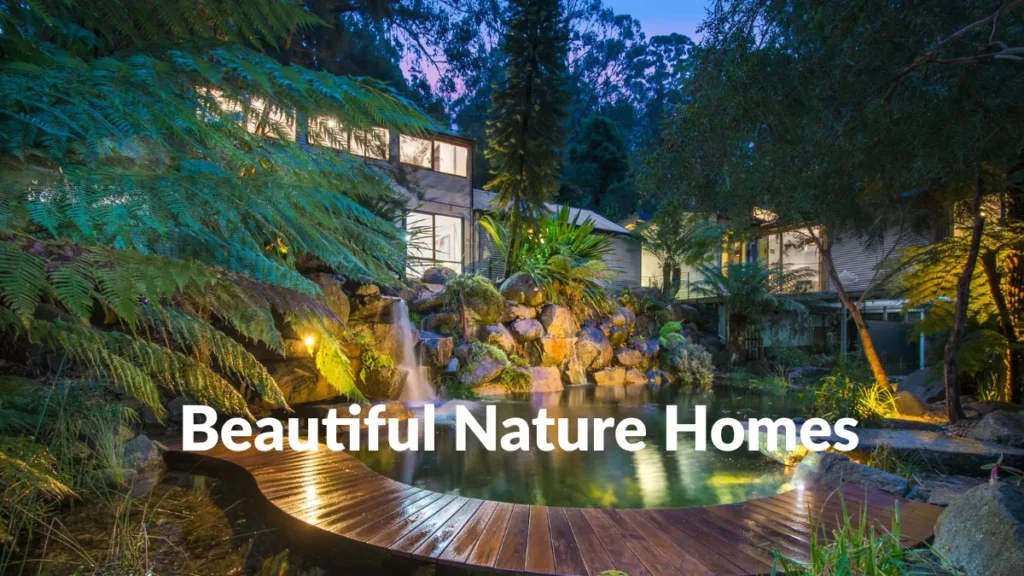Imagine waking up to the sound of rustling leaves, birds chirping in the distance, and sunlight pouring through tall pine trees. Nature homes offer not just shelter, but serenity. In a fast-paced, screen-heavy world, many Americans are looking to reconnect with nature—and there’s no better way than living among it. From forest cabins to mountain lodges and riverside retreats, nature homes in the USA are becoming increasingly popular.
This article explores the appeal of nature homes, where to find them, what to consider before buying, and why investing in such properties could change your life.
The Rise of Nature Homes in the USA
Over the last decade, there has been a growing demand for homes that blend seamlessly into natural surroundings. Especially after the COVID-19 pandemic, people began seeking residences that prioritize mental well-being, peace, and space. Remote work made living near the woods or mountains more viable.
Whether nestled in the Appalachian Mountains, overlooking the Great Lakes, or hidden in the Oregon forests, these homes offer an immersive experience. They are no longer just vacation homes—they are primary residences for those who crave nature’s embrace.
Top Locations for Nature Homes in the USA
If you’re considering buying a nature home, location is key. Here are a few popular regions:
- Asheville, North Carolina – Known for its Blue Ridge Mountains views, art scene, and tranquil forest surroundings.
- Lake Tahoe, California/Nevada – A mix of mountain air, lakefront beauty, and luxury homes.
- Boulder, Colorado – Offers Rocky Mountain living with an eco-conscious community.
- Sedona, Arizona – Famous for red rock views, spirituality, and desert nature homes.
- Catskills, New York – Wooded cabins with access to NYC—ideal for weekenders and remote workers.
- Willamette Valley, Oregon – Combines forests, rivers, and vineyards for a perfect natural lifestyle.
Key Features of Beautiful Nature Homes
Nature homes are designed to blend with their surroundings while still offering modern comforts. Common features include:
- Large windows and glass walls to bring in natural light and views
- Sustainable building materials such as reclaimed wood and stone
- Solar panels and energy-efficient systems
- Wooden decks, outdoor patios, or wraparound porches
- Open floor plans with natural tones and materials
- Proximity to hiking trails, lakes, or mountains
- Fireplaces or wood-burning stoves for cozy winters
Why Buy a Nature Home?
1. Peace & Privacy
These homes are often located in secluded, quiet areas—offering privacy from noisy cities.
2. Mental and Physical Wellness
Studies show that time in nature reduces stress, improves focus, and boosts mood.
3. Investment Potential
Many nature homes double as vacation rentals. Locations like the Smoky Mountains or Lake Tahoe yield excellent returns.
4. Eco-Friendly Living
Nature homes are often built with sustainability in mind, helping reduce your carbon footprint.
5. Lifestyle Upgrade
Imagine gardening with forest views, meditating on a porch swing, or spotting deer near your window—this is everyday life in a nature home.
What to Consider Before Buying
Buying a home surrounded by nature sounds perfect—but there are important considerations:
- Internet & Utilities: Remote homes may have limited connectivity or utility access.
- Maintenance: Nature can be tough on a house—expect higher upkeep for roofs, pest control, and heating systems.
- Accessibility: Some roads might be difficult during winter or rainy seasons.
- Wildlife: Encounters with animals can be frequent; secure trash, food, and gardens appropriately.
- Insurance: Forest homes might require special insurance due to fire or flood risks.
Tips for Buying a Nature Home
- Hire a Local Realtor – They understand zoning laws, land use rights, and seasonal weather impacts.
- Check Permits – Especially for wells, septic tanks, and solar setups.
- Visit in Different Seasons – See how the home feels in snow, rain, or summer heat.
- Get an Environmental Inspection – Assess for potential risks like flooding or erosion.
- Plan for Self-Sufficiency – Backup generators, satellite internet, and water filtration systems are helpful in remote locations.
Conclusion: Whispers of a Better Life
Nature homes whisper to our souls. They remind us of simpler times, fresh air, and the healing power of green. Whether you’re a young couple looking to escape urban stress, a remote worker wanting tranquility, or a retiree longing for peace, a beautiful home in nature can offer the life you crave.
From coast to coast, forest to field, the USA is rich in landscapes and natural beauty. Find the place that speaks to you—and answer the call of the wild.
FAQs
Q1: Are nature homes more expensive than city homes?
Not always. While luxury forest homes can be pricey, many nature homes are more affordable than urban properties, especially in rural areas.
Q2: Can I get a loan for a remote home?
Yes, though lenders may require a higher down payment or specific insurance depending on the property’s location and risks.
Q3: Is it safe to live near forests or mountains?
Yes, with precautions. Make sure the home has fire-resistant materials, and check flood zones before purchase.
Q4: How do I rent out my nature home as a vacation spot?
Platforms like Airbnb and Vrbo are popular. Ensure local regulations permit short-term rentals.
Q5: What kind of maintenance should I expect?
Expect regular checks for roof integrity, pest control, snow removal, and upkeep of outdoor wood surfaces.



